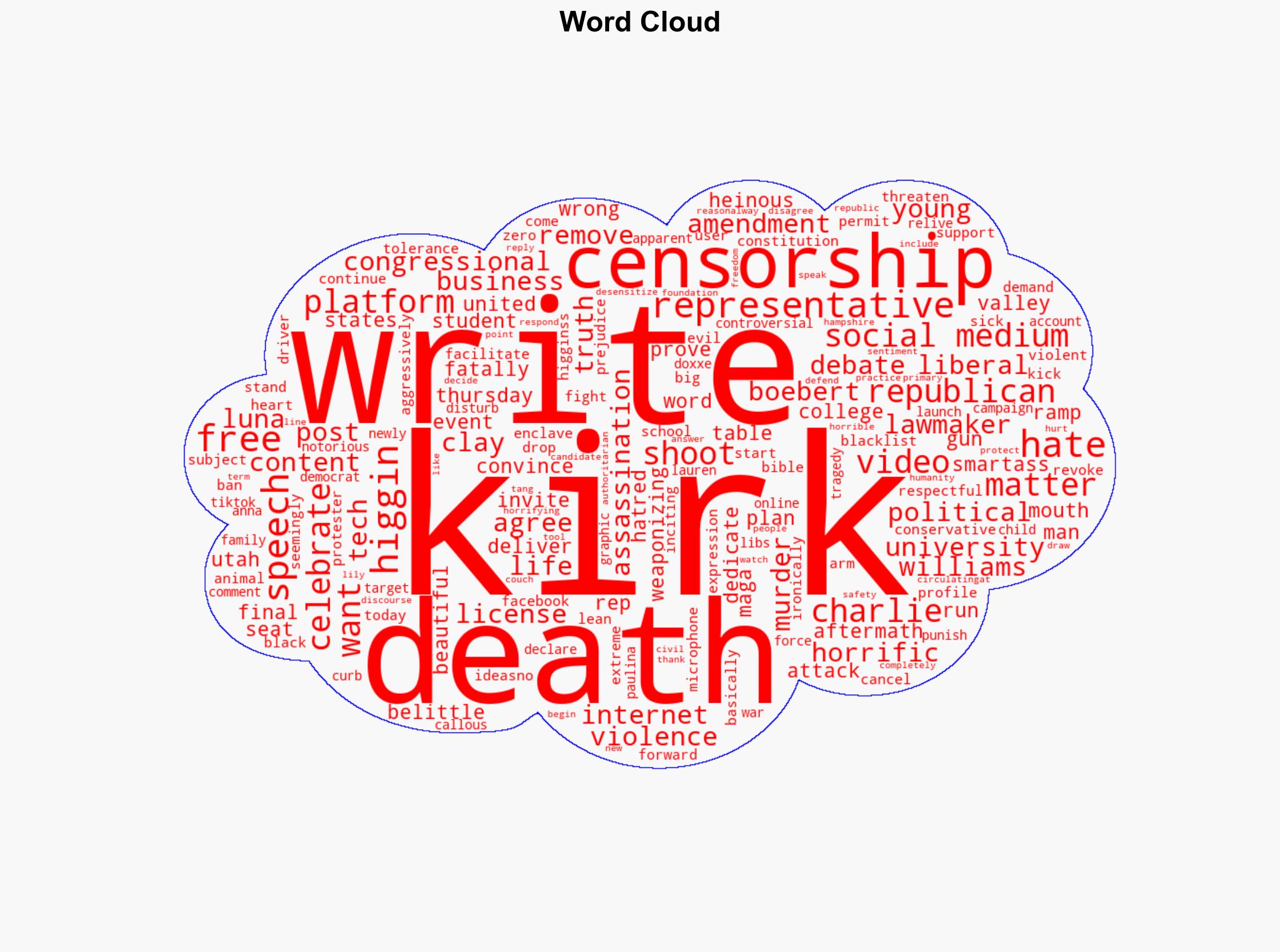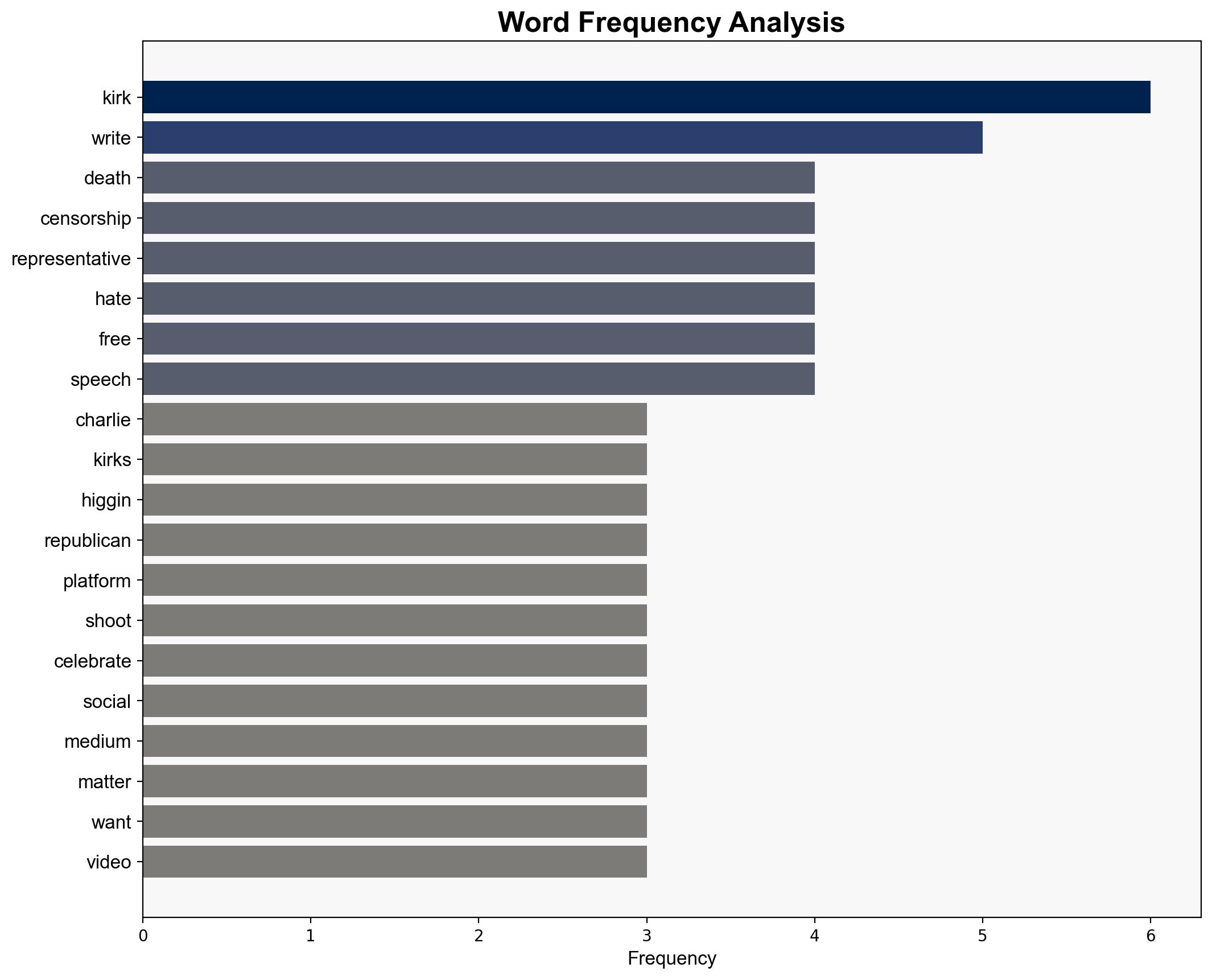MAGA Rep Wants to Use Charlie Kirk Death to Blow Up First Amendment – The New Republic
Published on: 2025-09-11
Intelligence Report: MAGA Rep Wants to Use Charlie Kirk Death to Blow Up First Amendment – The New Republic
1. BLUF (Bottom Line Up Front)
The strategic judgment is that the proposal to restrict free speech on social media platforms following Charlie Kirk’s death is primarily a political maneuver rather than a genuine attempt to address violence. The most supported hypothesis is that this initiative aims to consolidate political power by leveraging public sentiment. Confidence level: Moderate. Recommended action: Monitor political discourse and social media policy changes closely to assess impacts on free speech and political polarization.
2. Competing Hypotheses
1. **Hypothesis A**: Representative Clay Higgins’s proposal to restrict free speech is a sincere effort to prevent violence and protect public safety.
– **Supporting Evidence**: Higgins’s statements emphasize the need for zero tolerance towards violent political hate content.
– **Contradictory Evidence**: Higgins has a history of controversial statements that suggest a selective approach to free speech issues.
2. **Hypothesis B**: The proposal is a strategic political maneuver to gain support from conservative constituents by appearing tough on perceived liberal threats.
– **Supporting Evidence**: The emphasis on targeting “liberal enclaves” and the use of emotionally charged language suggest a political agenda.
– **Contradictory Evidence**: Some conservative figures, like Lily Tang Williams, oppose censorship, indicating potential intra-party conflict.
Using ACH 2.0, Hypothesis B is better supported due to the alignment of Higgins’s rhetoric with political gain rather than consistent policy on free speech.
3. Key Assumptions and Red Flags
– **Assumptions**: The assumption that social media censorship will effectively reduce violence is unproven and lacks empirical support.
– **Red Flags**: Higgins’s past statements on social media censorship raise questions about consistency and genuine intent.
– **Blind Spots**: The potential backlash from free speech advocates and the impact on bipartisan support are not addressed.
4. Implications and Strategic Risks
– **Political Polarization**: Increased censorship could exacerbate divisions between political factions, leading to heightened tensions.
– **Cybersecurity Risks**: Efforts to censor content may drive users to less regulated platforms, complicating monitoring and enforcement.
– **Geopolitical Impact**: International perception of U.S. free speech policies could be affected, influencing diplomatic relations.
5. Recommendations and Outlook
- Monitor legislative developments and public reactions to gauge shifts in political dynamics.
- Engage with social media platforms to understand potential changes in content moderation policies.
- Scenario Projections:
- Best Case: Constructive dialogue leads to balanced policies that protect free speech while addressing violence.
- Worst Case: Escalation of political tensions results in widespread censorship and civil unrest.
- Most Likely: Incremental policy changes with ongoing debate and polarization.
6. Key Individuals and Entities
– Clay Higgins
– Charlie Kirk
– Anna Paulina Luna
– Lauren Boebert
– Lily Tang Williams
7. Thematic Tags
national security threats, cybersecurity, counter-terrorism, regional focus




